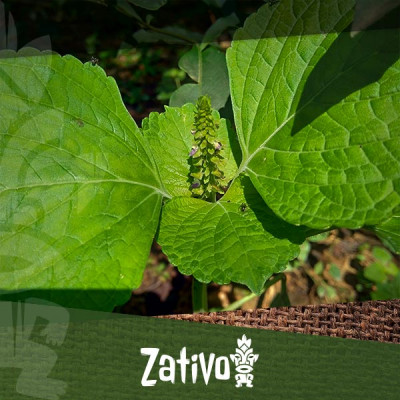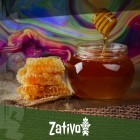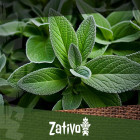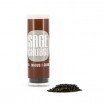Don't have an account?
Register NowYou have to add to cart at least 5 bottles or any program to make checkout.
- BlogWhat Are The Effects Of Salvia Divinorum?
What Are The Effects Of Salvia Divinorum?
Published: December 30th, 2016
Categories:
Plants and Seeds
Salvia divinorum is a member of the sage species (and therefore a relative of mint) native to Mexico and Central America. This drug, the so-called seer’s sage, is extremely potent and, to some, infamous. However, the truth is that this potent hallucinogen has a lot to offer, as long as it’s approached with respect.
Follow along to find out about the effects and uses of smoked Salvia divinorum.
What Is the Active Ingredient in Salvia?
Salvinorin A is the main psychotropic compound found in Salvia divinorum, and it is considered the most potent natural psychotropic compound known to humankind. It is what’s known as a trans-neoclerodane diterpenoid with the chemical formula C₂₃H₂₈O₈.
Unlike other hallucinogens (LSD, psilocybin, or DMT), salvinorin A contains no nitrogen atom, and as such cannot be considered an alkaloid, but is instead a terpenoid. It is a kappa opioid receptor agonist, and is the only known non-alkaloid compound that can bind to these receptors, making it somewhat unique. It is also now known to affect the D2 receptors, which scientists believe influences its unusual effects.
Unlike comparatively similar drugs (though none are that similar), salvinorin A is considered a dissociative hallucinogen, whereas most are only hallucinogens.
A Brief History of Salvia Usage
In scientific terms, salvia was first “discovered” by Alfredo Ortega in 1982, in Mexico. This is when the chemical structure was first mapped.
However, in terms of usage, this plant has been known, loved, and feared for a very long time. Salvia has long been used in Central and South American cultures, prized for its psycho-mimetic, visionary effects. How long it has been used is unclear, as there is no obvious record. What seems clear is that it has a long history of cultural usage for certain indigenous groups—which is perhaps why it is called the seer’s sage, which is roughly how Salvia divinorum can be translated—or, perhaps, as the diviner’s sage.
What Are the Effects of Salvia?
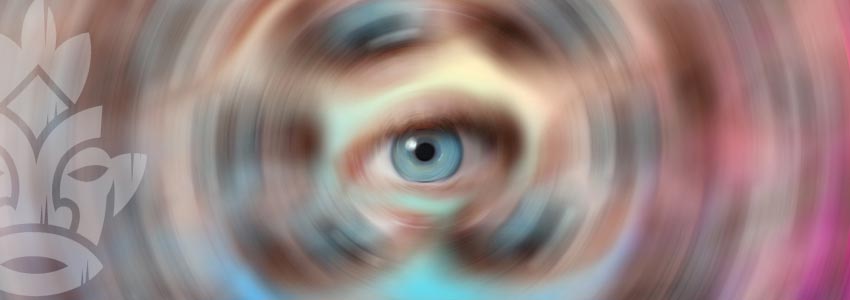
The effects of salvia are strange, to say the least. In fact, many people try salvia once and turn away from it forever, due to its extreme and often uncomfortable effects. But this can have more to do with how it’s taken than the inherent qualities of the drug itself.
A Note on Chewed Salvia Leaf
Traditionally, salvia leaf is chewed as a “quid”, and its effects take hold after about 30–40 minutes. Generally, this method is not favoured by most people as the desired effects are said to be less apparent, while the unwanted side effects are much more apparent and linger for a longer time.
The following sections will refer to smoked salvia only. If you want to discover more about chewing quid, there’s plenty of information available online.
Phenomenological Effects
In terms of how salvia feels, it’s almost impossible to describe.
This drug is pretty unique, comparing only partially to other drugs; even then, comparisons might do more to complicate the matter than illuminate it.
The effects of salvia take hold very quickly when it is smoked, with a rapid and sometimes overwhelming “come-up”. From about 10 seconds in, the entire universe can change, depending on the dose taken. Lighter doses will create a kind of body rush (but not one that fills the user with energy as with stimulants). Visuals and audio become fractal and distorted, but not with the psychedlia of other hallucinogens. Rather, sensory input becomes fractured and confusing. Mind loops and some confusion can occur, but the mind may also remain clear.
At higher doses, users can depart reality and their bodies more fully, entering strange, broken realms. Unlike DMT, this experience tends to be much more confusing and less clear, though it can still be profound and full of meaning. The experience is something akin to being strapped down and fired through the universe at light speed, with your thoughts struggling to keep up with your body.
It’s best not to try to move when under the effects of salvia; motor control can be limited and navigating the world can be basically impossible, and potentially quite dangerous depending on where you are.
Salvia often makes users feel uncomfortable too, hence its infamy. Many people experience panic with salvia, due to the unexpected intensity of the effects. This can be mitigated with research, as if you have a better idea about what to expect, it will be less scary when it occurs. It’s very important to go into the salvia experience expecting a powerful hallucinogenic experience, not a light, jaunty high.
Physical Effects
As mentioned, salvinorin A binds to the k-opioid and D2 receptors and is thought to exert most, if not all, of its effects through these mechanisms. Its physical effects are not well understood, though it is considered to have a low toxicity and a low potential for addiction—with no known overdoses or cases of addiction.
As with many hallucinogens, its effects are thought to be almost entirely mental, with minimal physiological changes occurring. A raised heart rate and increased perspiration are likely with the drug, but it is unclear if this is a direct result of the drug, or the body's natural response to the effects of the drug.
One physical effect it does have is the ability to inhibit intestinal motility, making constipation more likely. This effect is due to the drug binding to k-opioid receptors, which are linked to intestinal function. However, if used occasionally, this is unlikely to be noticed.
Salvia Side Effects
The side effects of salvia are difficult to distinguish from the "desired" effects.
The main side effects are anxiety and panic, but these could more appropriately be considered the main effects in a certain context.
Other side effects include nausea and a loss of motor control. When smoked, few obvious side effects occur that aren’t directly linked to what can be considered the main effects. But be in no doubt—you will feel extremely strange!
What Drugs Are Similar to Salvia?
Salvia shouldn’t really be compared, as this will give new users the wrong idea of what to expect. However, to give an idea of its strength, it’s something like doing a breakthrough hit of DMT while in a K-hole—at high doses.
Salvia induces strong out-of-body and out-of-reality experiences, and renders the user more or less totally incapacitated for the duration of the experience.
How Is Salvia Used?
Traditionally, raw salvia leaves are chewed, as salvinorin A can be absorbed through the mucous membrane in the mouth. However, these days this ingestion method is rare, as raw salvia leaf doesn’t have particularly potent effects.
Instead, salvia extract is applied to dried leaf, which is then smoked, causing the extremely powerful effects most users are familiar with.
How to Dose Salvia?
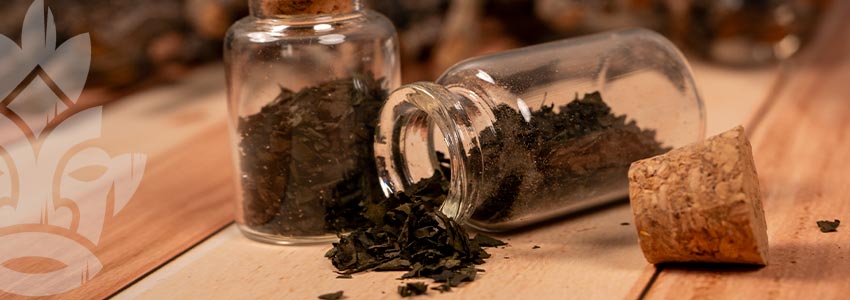
Dosing salvia can be difficult. The main reason for this is that most of salvia you can buy to smoke comes as an extract (10x, 20x, 30x, and so on). Therefore, the suggested dose decreases as the concentration of the extract increases, meaning general doses are difficult to provide. For each strength, use the following doses as guidelines:
- Dried leaf: ¼ –1 gram
- 5x extract: 0.1 – 0.3 grams
- 10x extract: 0.05 – 0.15 grams
- 15x extract: 0.03 – 0.1 grams
- 20x extract: 0.025 – 0.075 grams
- 40x extract: 0.012 – 0.037 grams
Knowing which extract you have and what it weighs is extremely important if you want to avoid a terrible experience. Eyeballing a 20x extract and hoping for the best is likely to go very wrong, and you’ll probably never want to try salvia again—so be careful!
Is Salvia Safe?
Generally, salvia is considered safe, even though it can be very uncomfortable.
That being said, there is some evidence to suggest that salvia might precipitate dormant mental health conditions, and so those with a history or family history of mental illness should proceed with caution, or avoid it entirely.
Is Salvia Addictive?
No, there is no evidence that Salvia divinorum is addictive.
Can You Overdose on Salvia?
Despite the severity of the experience, there are no known cases of salvia overdose.
Is Salvia Legal?
Yes, curiously, even where other hallucinogens are illegal, salvia has escaped prohibition. Why this is is unclear, but don’t let it lull you into a false sense of security. Just because salvia is legal and easily accessible doesn’t mean it’s not just as potent as the most illegal drugs. Drug laws are incoherent—don’t use them as a guide!
The Effects of Salvia: A Misunderstood Drug
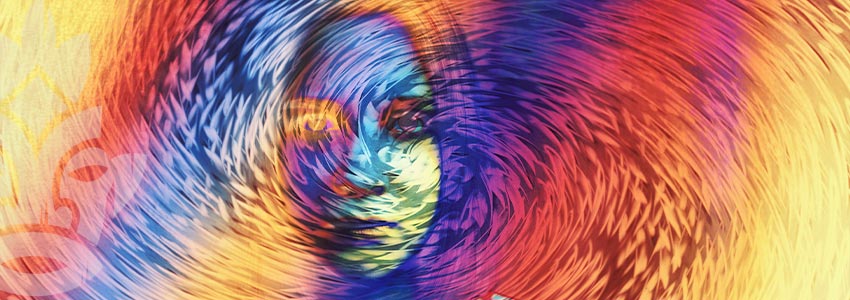
Salvia is very misunderstood. People tend to either underestimate its power due to its legality, or they lambaste it as an infamously unpleasant drug with no beneficial effects. Both assumptions are wrong. Salvia can be an insightful hallucinogenic drug, but for this to be the case, its potency must be properly understood, and users have to know how to properly dose it—otherwise the experience can become deeply unpleasant.

